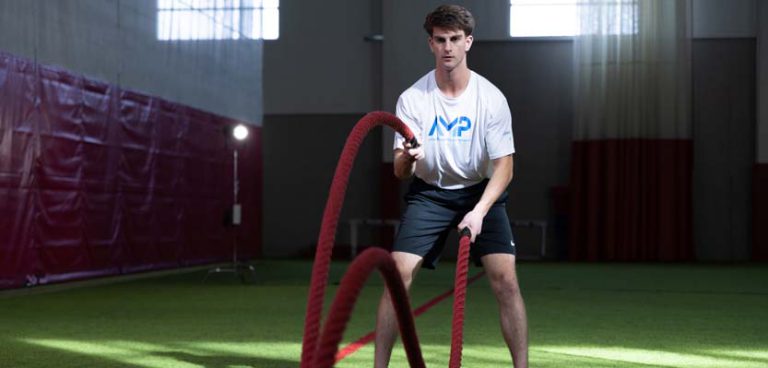With a busy lifestyle, you don’t want anything to slow you down. A shoulder injury can not only slow you down, but you will also find the pain hard to live with every day.
David Stepner, PT, St. Elizabeth Burlington explains, “Typically, shoulder injuries come from overuse in sports with a lot of overhead movement, such as baseball, volleyball, tennis, and swimming. However, usual tasks performed everyday such as yard work, housecleaning, and home maintenance when done repetitively or with too much weight, can also be the cause of overuse injuries of the shoulder.”
The most common shoulder injury from overuse is rotator cuff tendonitis. Rotator cuff tendonitis affects the tendons and muscles that move your shoulder joint. If you have tendonitis, your tendons are inflamed or irritated. Rotator cuff tendinitis is sometimes called impingement syndrome because as the rotator cuff is damaged, it causes an abnormal motion of the shoulder joint. This motion causes the upper arm bone (humerus) to bump into the top of the shoulder blade (scapula) and impinging motion giving rise to pain.
Recognizing a shoulder injury
If you’re not sure what is wrong with your shoulder but are experiencing pain or mobility issues, the first thing you should do is rest your shoulder.
“Rotator cuff tendonitis tends to happen gradually,” explains David. “Pain is the most common symptom, but other symptoms may be popping or clicking. The pain will be worse during or after an activity with overhead movement.”
Other symptoms of rotator cuff tendonitis, include:
- Loss of mobility and strength in the affected arm
- Pain when sleeping on the affected shoulder
- Pain when reaching behind your back
- Stiffness
- Swelling in the front of your shoulder and side of arm
Another common shoulder injury, dislocation, is usually caused by trauma and is more common in football, basketball, and other contact sports.
5 Exercises to Prevent Shoulder Injuries
Your shoulder gets a workout in everyday life, but if you are an athlete, it takes even more of a beating.
“If you don’t keep your shoulder muscles strong, you aren’t supporting your shoulder joint and you can become vulnerable to injury,” says David.
David explains that not only is it important for your shoulder muscles to be strong, but the strength of your shoulder blade muscles, and neck muscles are also critical.
Here are five exercises to help you prevent shoulder injury and overuse injuries.
- Standing rows—Using an elastic band, create a loop and attach to a doorknob or stable object. Stand holding the band with your elbow bent and at your side. Keep your arm close to your side and slowly pull your elbow straight back squeezing your shoulder blades to power the motion. Don’t let your elbows go beyond your buttock.
- Bi-lateral shoulder extension—With band looped around a doorknob, stand with arms slightly out in front of body with elbows straight. Extend both arms backward to just beyond your body, keeping elbows straight making sure to squeeze your shoulder blades together as you pull back. Don’t let the arms go beyond the buttocks.
- Bi-lateral external rotation—Using an elastic band, create a loop and attach to a doorknob or stable object. Stand holding the band with your elbow bent and at your side. Keeping your elbow close to your side, slowly rotate your arm outward making sure to squeeze your shoulder blades as you rotate your arm out about 45° from your body.
- Horizontal abduction—While standing, raise your arms in front of you at shoulder level. Using a band, stretch the band out to the side of your body while keeping your arms at shoulder level. Squeeze your shoulder blades together as you pull your arms apart making a ‘T’ with your arms perpendicular to your body.
- Prone abduction and extension—lay on your stomach at the edge of a table with your injured arm hanging over the side. Keep your arm straight with palm down and slowly raise it up to eye level, squeezing your shoulder blades to power the motion parallel to the floor. Slowly lower it back to the starting position.
In addition to the exercises above, St. Elizabeth Healthcare has also worked to develop an innovative Upper Extremity Injury Prevention Program. This program was built to provide weekend warriors and student athletes with a FREE program on how to keep their upper body strong and injury free. More information about this exciting program will be released soon! Additional information on previous injury prevention programs can be found at www.stelizabeth.com/ACL
When to Seek Treatment for Your Injury
“If you experience a trauma to your shoulder, I recommend seeing a doctor immediately. Ruling out serious injuries early is important to ensure comprehensive care and fostering the best outcome” says David.
He also recommends that you rest your shoulder when you start to feel pain. If the pain persists for more than a week after resting, call your doctor. Physical therapy can often help a shoulder injury with out the need for surgery.
If you are struggling with shoulder pain, visit stelizabeth.com/sportsmed or call for an appointment at (859) 212-5600.

